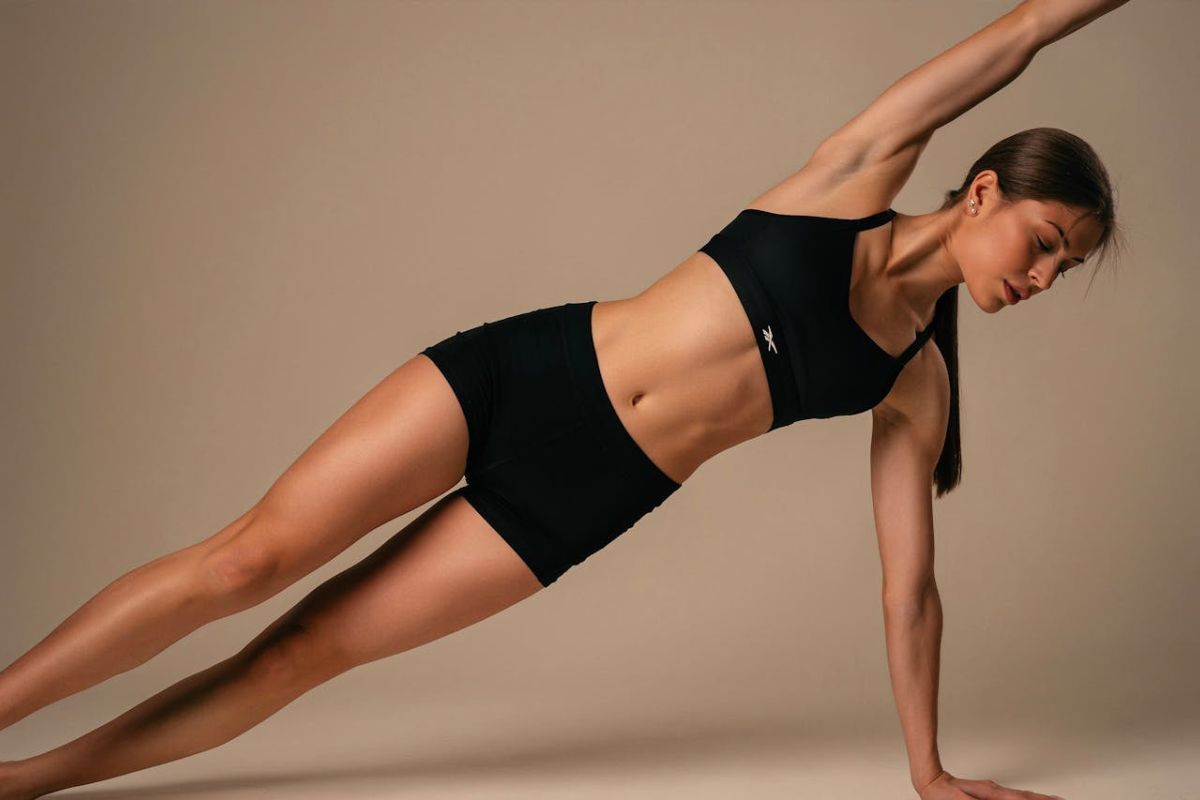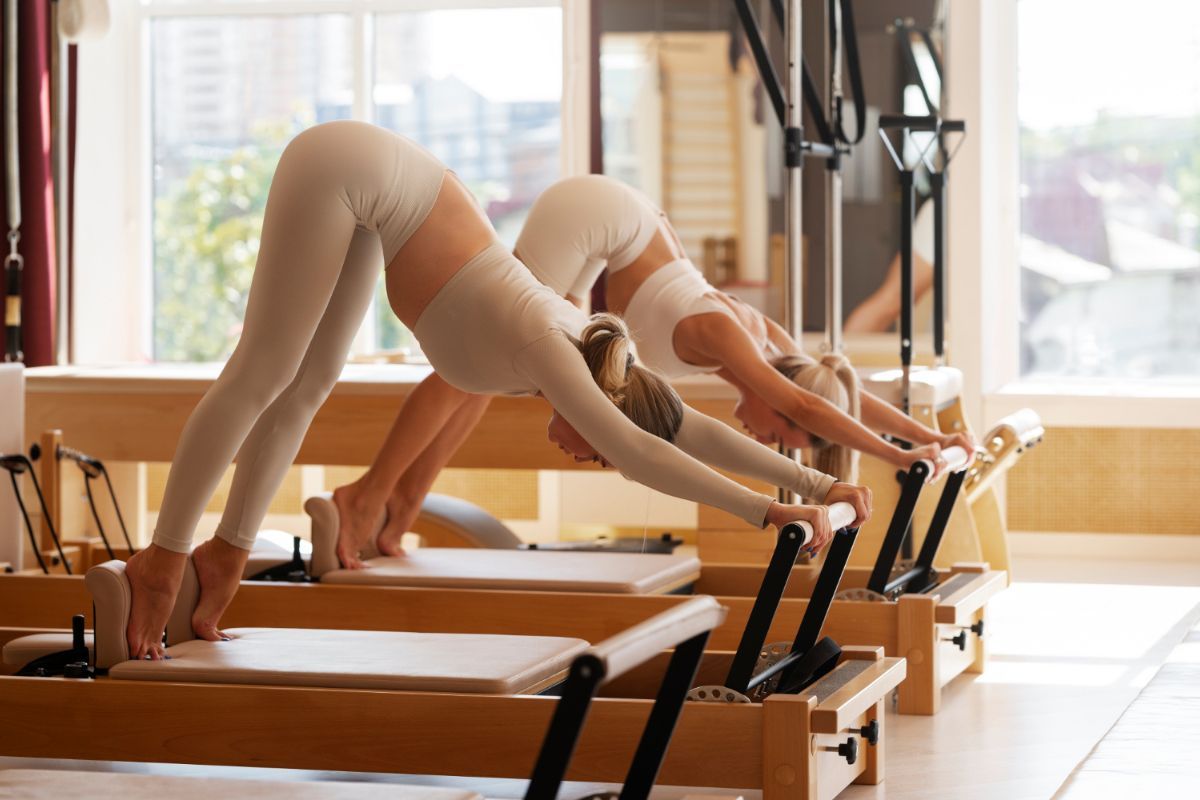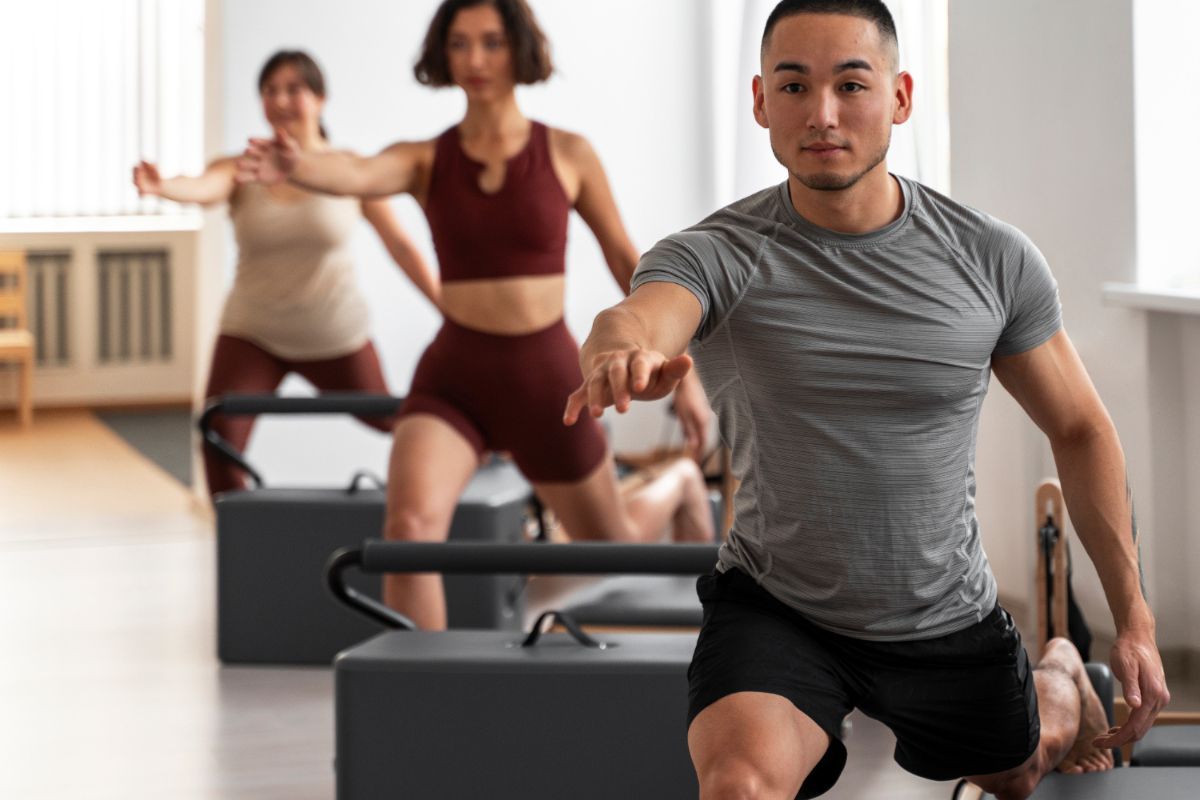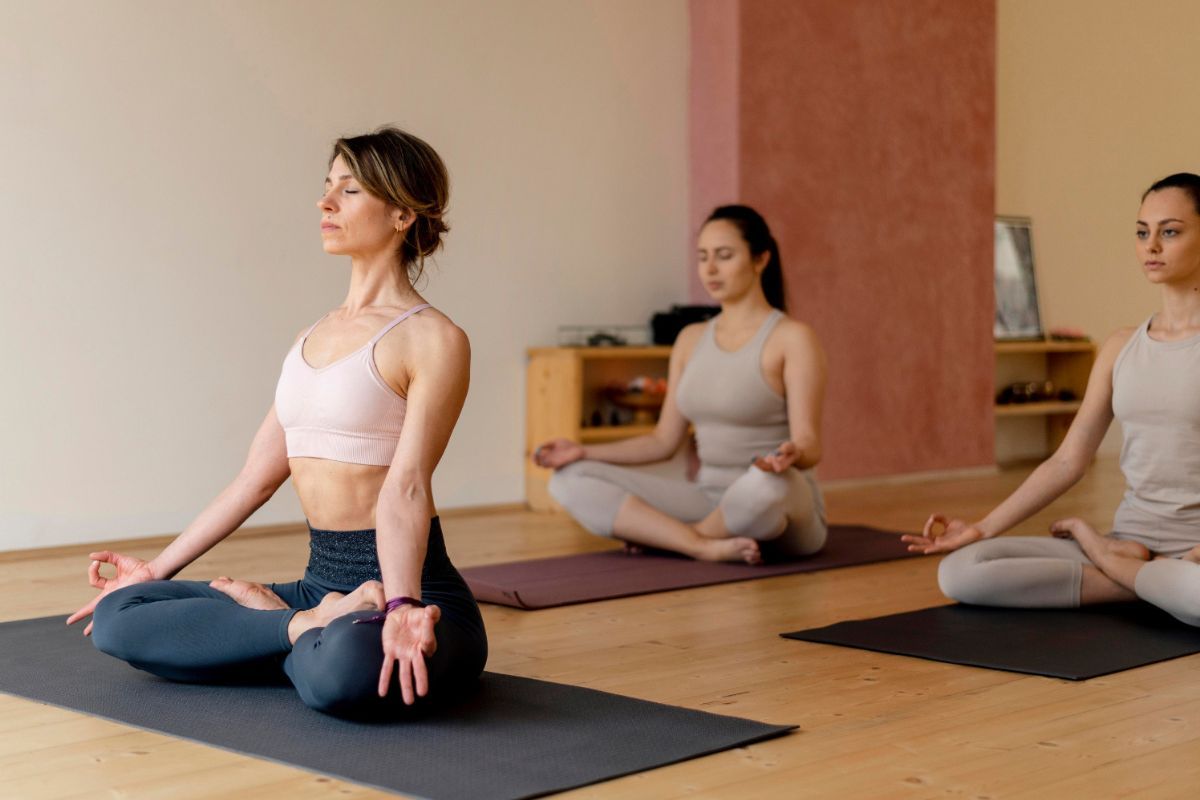Pilates vs. Yoga: Which one is right for you?
Confused between Pilates and Yoga? This article breaks down their key differences to help you decide! Whether you’re looking to build muscle, reduce stress, or improve overall fitness, find out which practice aligns with your goals and lifestyle.
Alright, let’s settle this once and for all—Pilates or Yoga? If you’ve been stuck in a “which one is better for me” spiral while scrolling through fitness hashtags, you’re not alone.
These two heavyweights of the mind-body fitness world are often pitted against each other—They’re like the Taylor Swift and Beyoncé of fitness—and honestly, it’s easy to see why. They both promise to make you stronger, calmer, and more balanced. But here’s the tea: they’re as different as matcha and espresso.
Are you team “strengthen my core like a superhero” (Pilates)? Or are you all about “finding my inner peace and maybe touching my toes for the first time ever” (Yoga)? It’s not an easy decision, but don’t worry—we’re here to break it all down for you.
In this article, we’ll give you the lowdown on both practices—where they came from, what they’re good for, and how they stack up. By the end, you’ll know exactly which one deserves a spot in your fitness routine (or maybe you’ll decide to mix and match—spoiler alert: that’s totally an option).

Source: Pexels
Brief history and origins
Let’s take a quick trip back in time to see where it all began—because knowing the roots of Pilates and Yoga might just help you figure out which one’s calling your name.
Pilates: The new kid on the block
Pilates might seem like a trendy workout, but it’s got a solid history. It was created in the early 1900s by Joseph Pilates (yes, it’s named after him—points for originality!). Joseph developed it as a rehab method for injured soldiers and dancers. Talk about multi-purpose!
His big idea? To strengthen the “powerhouse” (aka your core) and build a body that’s strong, balanced, and totally injury-proof. Over time, Pilates evolved from a rehab technique into the go-to workout for anyone looking to tone up without breaking a sweat… well, maybe just a little sweat.
Curious about Reformer Pilates? Check out our blog: What is Reformer Pilates: Exercises & Benefits to learn all about this popular Pilates style, why everyone’s obsessed with it, and how it can take your fitness game to the next level.
Yoga: The OG of mind-body workouts
Now, let’s talk about Yoga—the ancient grandmaster of fitness. It’s been around for over 5,000 years (yep, five thousand), and it’s all about uniting your mind, body, and spirit.
Yoga originated in India as a spiritual practice, with an emphasis on breathwork (pranayama), meditation, and movement (asanas). While the spiritual side is still a big deal, modern Yoga has adapted into a full-on fitness phenomenon, with styles ranging from chill (Restorative Yoga) to “how is this even legal” intense (Power Yoga).
Want to dive deeper into the world of Yoga? Celebrate the essence of this ancient practice with our blog: Embracing the Essence of Yoga: Celebrating World Yoga Day. Discover how Yoga transforms lives and why it continues to inspire millions around the globe.

Source: Pexels
Core principles and philosophy
Let’s break it down: Pilates and Yoga may seem similar on the surface, but their core principles (pun absolutely intended) and philosophies are what set them apart.
Pilates: It’s all about control
If Pilates had a mantra, it would be something like “precision over chaos.” The whole practice is centered around controlled movements, proper alignment, and—of course—your core, lovingly referred to as the “powerhouse.”
Key principles include:
- Focus on core strength: Every move starts from your core and radiates outward. Whether you’re on a mat or a Reformer (fancy Pilates equipment), your abs are doing most of the work.
- Mind-body connection: It’s not just about doing the moves; it’s about doing them perfectly. Pilates encourages you to stay laser-focused on how your body moves.
- Efficient movements: Forget endless reps. Each exercise is designed to be effective and purposeful, targeting specific muscle groups without wasting time.
The vibe? Practical, precise, and no-nonsense. Think of it as a workout that trains your body like a well-oiled machine.
Yoga: Mind, body, spirit vibes
Yoga, on the other hand, is all about connection. It’s not just a workout—it’s a whole lifestyle if you want it to be. The philosophy of Yoga is rooted in the idea of harmony: between your body and mind, your breath and movement, and sometimes, your snacks and your soul.
Key principles include:
- Unity and balance: Yoga’s goal is to create balance—not just physically, but mentally and emotionally.
- Breathwork (Pranayama): Your breath is the VIP of every Yoga session. It’s not just about doing the poses; it’s about syncing them with your breathing to find your flow.
- Mindfulness and meditation: Whether it’s a quick child’s pose or a long Savasana (that dreamy final resting pose), Yoga is your chance to pause, reflect, and de-stress.
- Variety of styles: From meditative Yin Yoga to intense Power Yoga, there’s a type of Yoga for every mood and goal.
The vibe? Holistic, grounding, and introspective. It’s like giving your mind and body a spa day, with a side of sweat.
TL;DR: How they compare
- Pilates: A modern practice focused on precision, core strength, and controlled movements. It’s about building a solid foundation and improving physical performance.
- Yoga: A spiritual-turned-modern practice that prioritizes unity, mindfulness, and breathwork while giving your body a full stretch-and-strengthen experience.
So, do you want a workout that feels like fine-tuning a machine, or one that’s more about finding your flow? Let’s keep going and see which one speaks to you!
Source: Freepik
Physical and mental health benefits
Alright, let’s get to the juicy part: What can Pilates and Yoga actually do for you? Both are incredible for your physical and mental well-being, but their benefits hit a little differently. Here’s the breakdown.
Pilates: Build strength, boost stability
If you’re looking to feel stronger, stand taller, and crush your posture game, Pilates has your back (literally).
Physical benefits:
- Core strength: Pilates is the OG of ab workouts. It targets your deep core muscles, making your entire body feel more supported and balanced.
- Better posture: Say goodbye to that hunched-over-at-your-desk vibe. Pilates aligns your spine and strengthens the muscles that keep you upright.
- Increased flexibility: You’ll stretch and strengthen at the same time, which means you’ll feel more limber without sacrificing strength.
- Injury prevention: By focusing on controlled movements and muscle balance, Pilates helps reduce the risk of injuries in your day-to-day life or other workouts.
Mental benefits:
- Laser focus: Pilates requires concentration on every move, so it pulls you into the present moment and leaves little room for stress.
- Stress relief: A well-balanced session can leave you feeling calm, clear-headed, and totally refreshed.
Yoga: Stretch, strengthen, de-stress
Yoga isn’t just a workout—it’s a whole mood. Whether you’re aiming to touch your toes or calm your racing mind, Yoga has you covered.
Physical benefits:
- Improved flexibility: Those tight hamstrings and stiff shoulders don’t stand a chance. Yoga stretches muscles you didn’t even know existed.
- Full-body strength: From downward dog to warrior pose, Yoga engages your entire body while improving balance and endurance.
- Better balance and coordination: It’s not just about standing on one leg—it’s about finding balance in movement and stillness.
- Enhanced breathing: Yoga’s focus on breathwork improves lung capacity and teaches you how to breathe better under pressure.
Mental benefits:
- Stress reduction: Yoga is basically a reset button for your brain. The combination of movement, breath, and mindfulness can lower cortisol levels and boost your mood.
- Mental clarity: Whether you’re meditating or holding a challenging pose, Yoga teaches you to focus and let go of distractions.
- Emotional well-being: Many people find Yoga helps them process emotions and feel more connected to themselves.
TL;DR: The benefits showdown
- Pilates: Core strength, posture perfection, and injury prevention for a body that feels unstoppable. A side of stress relief keeps you calm and collected.
- Yoga: Flexibility, balance, and mindfulness for both your body and mind. It’s your all-in-one de-stress and stretch session.

Source: Freepik
Key differences to consider
Pilates and Yoga might look similar at first glance—mats, stretchy poses, and a room full of people trying to look graceful—but don’t be fooled. The devil is in the details, and the differences between these two practices can help you decide which one is your perfect fit.
Let’s break it down.
1. Core focus vs. Full-body integration
- Pilates: Pilates is obsessed with your core. Every move is designed to strengthen your “powerhouse” (a.k.a. your abs, back, and hips). Even when you’re working your arms or legs, your core is the star of the show.
- Yoga: Yoga takes a more holistic approach, focusing on full-body movement, flexibility, and balance. Sure, you’ll engage your core, but the goal is to create harmony across your entire body.
2. Equipment vs. Minimalism
- Pilates: If you love gadgets, Pilates is your jam. Beyond mat exercises, it often involves fancy equipment like Reformers, Cadillacs, and magic circles to add resistance and variety.
- Yoga: Yoga keeps it simple—just you, your mat, and maybe a block or strap if you’re feeling fancy. It’s all about using your body as the ultimate tool.
3. Spirituality vs. Science
- Pilates: Pilates leans more toward the scientific side of fitness. It’s focused on biomechanics, alignment, and building strength with precision. Spiritual vibes? Optional.
- Yoga: Yoga comes with a side of soul. Rooted in ancient traditions, it blends physical movement with mindfulness and spiritual growth (although modern classes can vary in how much they emphasize the spiritual aspect).
4. Flow vs. Control
- Pilates: Movements are precise, controlled, and often isolated to target specific muscle groups. Think small, intentional moves that pack a punch.
- Yoga: Yoga is all about flow. Most styles involve moving smoothly from one pose to another, creating a rhythm that’s as much about your breath as it is about your body.
5. Class structure
- Pilates: Expect smaller classes, especially if equipment is involved, with a strong focus on instructor feedback. Every move is intentional, and your instructor will make sure you’re doing it just right.
- Yoga: Yoga classes can vary widely, from one-on-one sessions to large group flows. The vibe depends on the style—some are super chill (hello, Yin Yoga), while others are high-energy sweat fests (looking at you, Power Yoga).
6. Goals: Strength vs. Flexibility
- Pilates: Perfect for building strength, improving posture, and preventing injuries. It’s a go-to for athletes, dancers, and anyone who wants to feel like a superhero.
- Yoga: Great for increasing flexibility, reducing stress, and achieving balance—both physically and mentally. If you’re looking to zen out while you stretch it out, this is for you.

Source: Freepik
Who might prefer Pilates?
Let’s talk about the Pilates fans out there. If any of these descriptions sound like you, Pilates might just be your fitness soulmate.
1. You want to build a strong, stable core
If you dream of abs so strong they could double as a washboard, Pilates is your jam. This practice is all about strengthening your core—every move is designed to work your “powerhouse” (think abs, back, and hips). Whether you’re planking, leg-lifting, or rolling like a ball, your core is always the star of the show.
2. You’re recovering from an injury or looking to prevent one
Dealing with an old injury? Recovering from something recent? Pilates was literally designed for rehabilitation. Its low-impact movements and precise control make it a favorite for physical therapists and people looking to rebuild strength safely. Bonus: it helps prevent future injuries, too.
3. You love precise, controlled movements
Are you the type of person who likes things just so? Pilates is all about perfect alignment and intentional movements. Every exercise is designed to be done correctly, and instructors will often fine-tune your form to make sure you’re getting the maximum benefit. If details make your heart sing, you’ll thrive in a Pilates class.
4. You enjoy workouts that incorporate cool equipment
Do you get excited about cool fitness gear? Pilates offers a playground of equipment, from the Reformer to the Cadillac (yes, that’s a real thing). These machines add resistance, variety, and a sprinkle of fun to your workouts. If you love the idea of mastering new tools, Pilates has plenty to keep you busy.
5. You’re more into strength training than cardio madness
If the thought of endless burpees makes you want to run for the hills, Pilates might be your happy place. It’s low-impact, controlled, and more about building strength than breaking a sweat. You’ll leave class feeling stronger—not drenched in sweat and gasping for air.
6. You’re looking to improve your posture
Does sitting at a desk all day have your shoulders slumped and your back aching? Pilates works wonders for posture. By strengthening your core and improving alignment, it’ll have you standing taller and feeling more confident in no time.

Source: Freepik
Who might prefer Yoga?
Are you a stretch-loving, balance-seeking, mindfulness-curious type? If any of the following sounds like you, Yoga might just be your new BFF.
1. You need a stress-relieving, mindfulness-boosting escape
Feeling like life is one big to-do list? Yoga is practically tailor-made for stress relief. The combination of breathwork, gentle movement, and mindfulness can help you hit the pause button and reconnect with your inner calm. If you’re looking for a mental reset, Yoga’s got your back (and your brain).
2. Flexibility and balance are high on your fitness goals
Can’t touch your toes? No problem! Yoga is the ultimate flexibility booster. With regular practice, you’ll notice those stiff muscles turning into stretchy, bendy, and downright graceful moves. Whether it’s mastering downward dog or finally nailing that forward fold, Yoga will help you get there.
3. You love exploring the mind-body connection (with or without the spiritual vibes)
If you’re intrigued by the idea of connecting your physical, mental, and spiritual health, Yoga offers the perfect trifecta. Beyond the poses (asanas), Yoga introduces breath control (pranayama), meditation, and even a sprinkle of philosophy. Whether you dive deep into the spiritual side or stick to the physical practice, there’s something for everyone.
4. You enjoy variety and want a practice that adapts to your mood
Yoga is like a buffet of styles—you’ve got the slow and meditative vibes of Yin Yoga, the intense sweat-fest of Power Yoga, the athletic flow of Vinyasa, and everything in between. There’s a style for every mood, goal, and energy level.
5. You’re looking for emotional wellness alongside physical strength
If you want to work on your balance (literally and metaphorically), Yoga delivers. Poses like tree pose, warrior III, and half-moon challenge your stability while building strength. Plus, the mindfulness aspect of Yoga helps you find balance in your busy, chaotic life.
6. You’re looking for emotional wellness alongside physical strength
Yoga isn’t just a physical practice—it’s also a safe space for emotional release. Whether it’s holding a pose and letting the tension melt away or meditating to quiet your inner critic, Yoga has a sneaky way of improving your mental and emotional well-being.
7. Anyone Who Loves Simplicity
Forget the fancy machines or elaborate setups—Yoga keeps it simple. All you need is a mat (and maybe a block or two), making it accessible no matter where you are. Want to flow in your living room? Totally doable.
Conclusion
So, Pilates vs. Yoga—did you find your match? Here’s the thing: there’s no “one-size-fits-all” winner here. Both Pilates and Yoga are amazing in their own ways, offering unique benefits to your mind and body.
- If you’re all about building core strength, improving posture, and loving the precision of controlled movements, Pilates is your perfect partner. It’s your go-to for a focused, strength-building workout that leaves you feeling like a superhero.
- If you’re craving balance, flexibility, and a way to de-stress while connecting with your mind and body, Yoga is calling your name. Whether you flow, stretch, or meditate, it’s a holistic practice that supports your entire well-being.
But here’s the best-kept secret: you don’t have to choose. Many people find that blending the two practices brings out the best of both worlds. Pilates can strengthen your core, while Yoga helps you unwind and stretch it all out.
Ultimately, the right choice is the one that feels good for you. Whether you’re a Pilates enthusiast, a Yoga devotee, or a mix-and-matcher, the important thing is to move, breathe, and take care of your body and mind!
Friska 🐸
Read next: Pilates vs Gyrotonic: Which one should I do?


